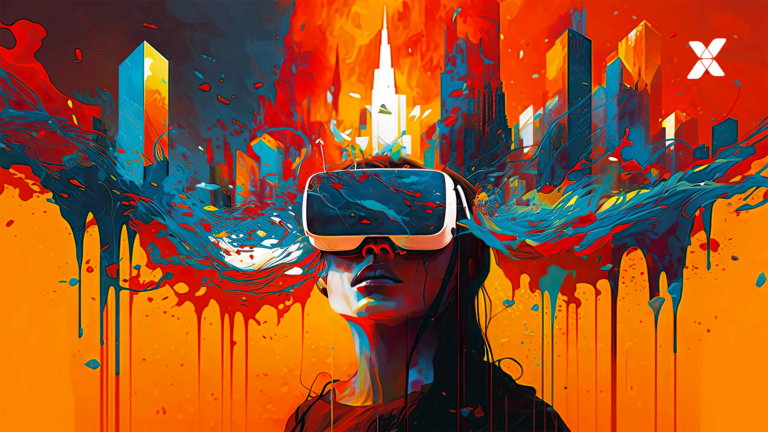The world of ecommerce is constantly evolving, and the technology behind it is too. Understanding new and existing technologies and how they can help your business can be challenging to keep up with, which is why we’d like to tell you about two technologies that you’ve probably heard of, but aren’t quite sure how to use.
Reverse image search and machine learning are two technologies that are changing the ecommerce landscape. These powerful tools help retailers improve their product search and product recommendations while at the same time protecting their brand and intellectual property.
Let’s look at reverse image search and machine learning in more detail and how they can help your business.
TABLE OF CONTENTS
Understanding machine learning in ecommerce
Machine learning (ML), a subset of artificial intelligence (AI), is a game-changer. You may be surprised to learn that it’s not a new technology at all – it’s been around since the 1950s, but it hasn’t been until the last few decades that we have seen its use take off.1 We may not realize it, but ML is everywhere, from Netflix suggestions to what appears in your social media feeds. It is estimated that by 2025, almost all enterprises will be implementing some form of AI.2
Unlike traditional systems that require extensive coding, ML learns from past data, refining its processes and decisions over time. This means it can tackle multiple scenarios at lightning speed, without the need for millions of lines of code.
Machine learning has many business benefits. It can drive down costs, enhance efficiency, and propel growth. However, it’s not without its challenges. According to Forbes, the primary hurdle businesses face with ML is a lack of skilled data scientists in ML to work on deployment and maintenance. The lack of standardization and adapting to changes in management and processes further exacerbate these challenges.
Related reading: Ecommerce personalization: Benefits, tactics, and best practices
The power of personalization
One of the most promising applications of machine learning in ecommerce is personalization. With ML, retailers can swiftly transform vast amounts of data into actionable insights, tailoring experiences to individual customers. McKinsey highlights the potential of personalization, noting that it can boost revenue by 5% to 15% and improve marketing efficiency by 10% to 30%.4 The future of personalization will be marked by three major shifts: digitizing physical spaces, scaling empathy, and leveraging ecosystems to customize the customer journey.
Let’s look at four ways reverse image search and machine learning can be used in ecommerce:
1. Product discovery and search optimization
Consumers are constantly being bombarded with information, so an easy-to-use and helpful search experience is key. Combined with machine learning algorithms, reverse image search can match customer-uploaded photos with products in an ecommerce store. This helps customers find products that align with their tastes and allows retailers to refine their search functionality to make it even easier for them to find what they are looking for.
2. Product recommendations
Machine learning can delve into a customer’s browsing and purchase history, offering personalized product suggestions. This enhances the shopping experience by presenting products tailored to a customer’s preferences, potentially spotlighting items they might have overlooked.
3. Intellectual property protection
Reverse image search is also a useful tool against brand infringement. Retailers can swiftly identify unauthorized sellers who might be using their product images, which might help ensure their brand and intellectual property remain safeguarded. This also helps retailers take action against unauthorized use.
4. Quality control
Machine learning can pinpoint and flag product images that might be problematic, such as low-resolution photos or those not meeting set standards. This ensures a consistent quality across product listings, enhancing the visual appeal of an ecommerce store.
Related reading: AI in ecommerce: Use cases and how to get started
Reverse image search and machine learning are tools that are not just enhancing the shopping experience; they’re setting new standards for product discovery, recommendation systems, brand protection, and quality control. Brands that harness these technologies can offer their customers a personalized and relevant shopping experience. These tools, while seemingly complex, offer straightforward solutions to age-old challenges in ecommerce, from product discovery to brand protection.
By leveraging machine learning, businesses can anticipate customer needs, tailor their offerings, and ensure a seamless shopping experience. Meanwhile, reverse image search acts as a bridge between customer intent and product availability, simplifying the search process. As we move forward, these technologies will set new benchmarks for efficiency, personalization, and customer satisfaction. Retailers willing to embrace and invest in these tools will not only gain a competitive edge but will also pave the way for a future where shopping is more intuitive, responsive, and user-centric.
How Vaimo can help
Vaimo, a leader in digital commerce and customer experiences, together with Algolia, an AI-driven search solution, are working to enhance ecommerce websites. Algolia offers ultra-fast search, real-time indexing, and multilingual support, delivering benefits such as superior user experience and increased conversions. Get in touch with our experts to explore Algolia’s capabilities and other services to improve your digital platform.
Sources
1 – Machine learning, explained – mitsloan.mit.edu
2 – Why you’re wrong about operationalizing AI – inrule.com
3 – Beyond innovation: Overcoming challenges in developing and deploying AI models – forbes.com
4 – What is personalization? – mckinsey.com







